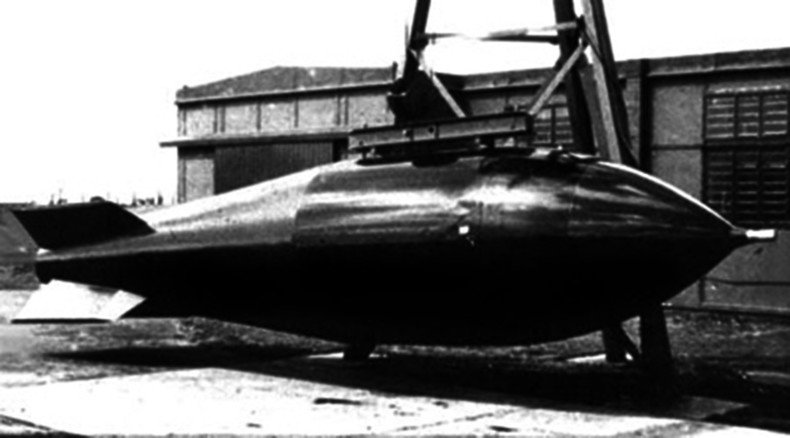Sex, spies & H-bombs: MI5 documents made public

Fear of the US hydrogen bomb and the tangled tales of “traitors” and spies; documents newly released by the British secret services cast fresh light on Cold War intrigue and the shady and sordid lives of British spies.
Four hundred Foreign Office, Cabinet Office and MI5 files have been made public for the first time in 50 years.
They reveal a climate of fear surrounding the US development of the H-bomb and highlight the operational failures of the secret service during the Cold War. They also offer fresh insight into the private lives of the so-called Cambridge spy ring.
H-bomb fear
The global race to build the H-bomb sent a shiver down Whitehall’s collective spine, the documents show. When US scientists detonated the first hydrogen bomb in 1952, 1,000 times more powerful than the atom-bomb, British security officials imagined nightmare scenarios where London fell in the Cold War firing line.
“Instead of dropping 32 bombs on London, they would probably use three, four or five very powerful ones … [each] with a radius of total destruction of 2-3 miles,” nuclear weapons scientist William Penney noted in a letter to the chairman of the Atomic Energy Authority.
MI5 spied on suspected communists & anti-colonial leaders, the secret files reveal all http://t.co/sHaCeYjhX6pic.twitter.com/EMZDvxT7ek
— RT UK (@RTUKnews) August 21, 2015The documents show plans were put in place for national survival should the Soviet Union have attacked with 200 regular atomic warheads. The documents note a hydrogen bomb attack would be much worse.
A sketch on the back of Penney’s note shows the capability of H-bombs to completely destroy London.
Secret life of spies
The scandalous lives of Donald Maclean, Guy Burgess, Kim Philby and Athony Blunt, known as the Cambridge spies, are well-documented. But the newly-released MI5 papers reveal depths of their backstabbing and betrayal.
Maclean and Burgess were dubbed “traitors” after they fled to Russia in 1951 – at the height of the Cold War. The story made the national papers, which offered cash rewards for information.
The documents reveal Philby and Mclean turned on the pair as they fled. Philby wrote to MI6 suggesting that Burgess may have been a spy for the Soviets, suggesting he had all “the essential requirements of an espionage agent.”
Well-‘red’: MI5 spied on prominent academics ‘for decades’, secret docs show http://t.co/cexKs9FfOlpic.twitter.com/5JJDTmmdNJ
— RT UK (@RTUKnews) October 24, 2014Blunt also met with the Deputy Director General of MI5 after the pair vanished, on a mission to ascertain what the services knew about Maclean and to cast suspicion on Burgess.
The documents also show that during their time at Cambridge University, Philby, Maclean and Burgess had all been members of the Socialist Society.
Chaotic operations
Also released are further details on the fate of MI6 frogman Commander Lionel Crabb, who went missing after a failed surveillance dive in Portsmouth Harbor. The officer was examining a ship which had brought Soviet spies into the UK.
It was revealed on Friday that his operation was so badly botched that it was considered near “criminal folly.”
Churchill had the key to the 'riddle' of Russia (Op-Edge) http://t.co/7SCWCP1YJepic.twitter.com/mGe0gGDIru
— RT UK (@RTUKnews) October 12, 2015Security on the mission so was lax that Crabb had even checked into a hostel under his real name the night before the dive. In an attempt to conceal the evidence, amid press interest, another officer decided to rip Crabb’s details out of the hostel register.
The documents show there was a misunderstanding about the mission’s clearance. They confirm the MI6 controller for Western Europe believed clearance had been given by a Foreign Office adviser.
The adviser, however, had no idea he had been asked for approval.
The mission was deemed a failure.
Sex parties
Scandalous new details on the unlikely friendship between gangster Ronnie Kray and Tory peer Robert Boothby have also emerged, suggesting the pair attended a number of ‘homosexual parties’ and were both “hunters of young men.”
MI5 believed the pair became friends due to their shared interest in young boys.
“Boothby is a kinky fellow and likes to meet odd people, and Ronnie obviously wants to meet people of good social standing, he having the odd background he’s got; and, of course, both are queers,” one MI6 agent wrote in 1964.
Thatcher-era cabinet secretary says MI5 were RIGHT to do nothing about VIP paedos http://t.co/fmfEPppYVVpic.twitter.com/1xqwoE2s8h
— RT UK (@RTUKnews) July 24, 2015Another report discusses the men’s sexual preferences.
“Boothby and Kray attended several homosexual parties together, at one of which they were photographed together (in a normal special pose).
“According to Holt there is no improper association between the two, nor is it likely that there would be, as both are ‘hunters’ of young men.”












